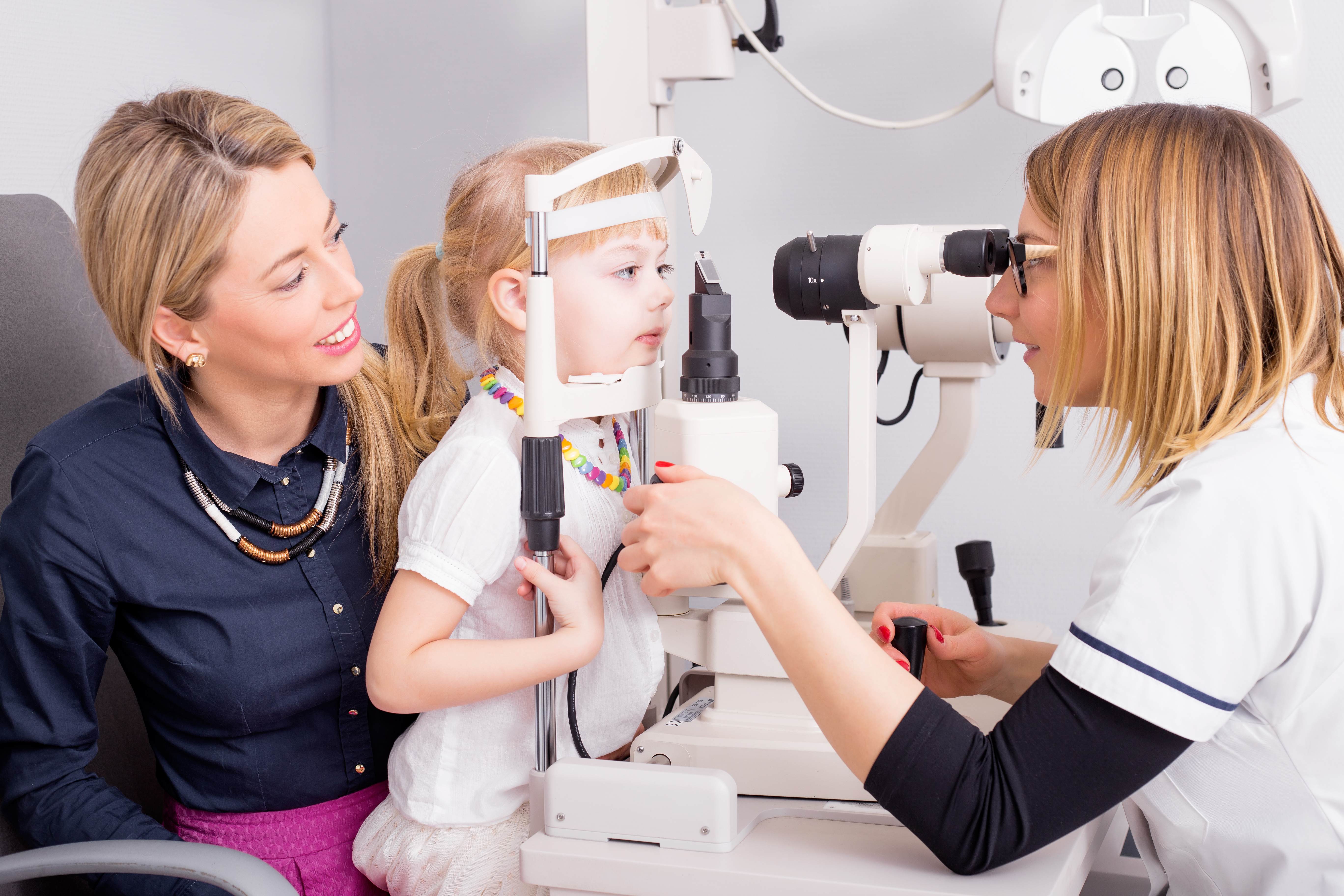Just when your kids thought summer would last forever, school has swung back into gear. Swimming pools and sleepovers have been replaced by pop quizzes and sack lunches.
As parents, we always want to give kids every tool possible to succeed in a new school year. One area that sometimes slips our minds is getting children a comprehensive eye exam before the first bell rings this fall.
Whether or not your child has experienced any difficulty with seeing so far in their lives, it’s a great idea to get their eyes checked once a year beginning around age 3. Just like the rest of their bodies, children’s eyes are growing and changing rapidly. Even if they show no sign of difficulty seeing does not mean these errors cannot manifest themselves quickly as a child grows older.
Refractive errors are most commonly found when children begin reading up close and things at a distance, such as what a teacher writes on a blackboard or whiteboard. Such common diagnoses as nearsightedness, farsightedness, and astigmatism can be caught during yearly exams. Beyond the common vision problems lurk four diseases that can strike at nearly any time and greatly affect your child’s vision if left untreated. Being knowledgeable of the diseases, their symptoms, and how they can be treated, can be very beneficial to your child’s long-term eye health. Here’s an overview of the four diseases:
Amblyopia (lazy eye)
This condition occurs when the brain ignores signals coming from one eye and only works with the other eye. The ignored eye, left untreated, may not develop normal vision. If caught early, it is quite treatable, but if treatment does not start until after ages 7-10, it might not work at all. Amblyopia affects 2-5% of the population.
Strabismus (crossed eyes)
Strabismus affects about 4% of children younger than the age of 6. It literally means a misalignment of the eyes, and usually includes multiple conditions including eyes turning inward, outward, up or down. Kids with disorders such as cerebral palsy or hydrocephalus have a greater chance of developing it. There are several types of treatment including surgery and eye drops, along with eye exercise or the patching of the stronger eye for a daily length of time to strengthen the weaker eye.
Ptosis (drooping of the eyelid)
Ptosis is sometimes present at birth and sometimes develops due to injury or disease. Sometimes the droop is slight, sometimes it covers the whole pupil or eye. Uncorrected early on, it can cause amblyopia.
Color blindness
Color blindness can be tough to spot in children early on, but as they become better at communicating, warning signs become easier to see. Some include complaints of eye pain when looking at a red or green background; sensitivity to bright lights; and using the wrong colors for an object while drawing. If a trip to the eye doctor confirms this condition, make sure all of your child’s key staff at his or her school are aware so they can adjust the learning atmosphere to fit their needs.
The health of your children’s eyes is very important so yearly eye exams help to just make sure there is nothing going on. Our experienced staff is here to provide the community with the utmost quality of services to help our community. Wylie ER is here to support your family 24/7, 365 with concierge-level emergency care for all ages.
Disclaimer: As a service to our readers, Wylie ER and Nutex Health state no content on this site, regardless of date, should ever be used as a substitute for direct medical advice from your doctor or other qualified clinicians.
Nutex Health, Inc supports you and your family’s health. You can depend on Wylie ER, or any one of our concierge-level, medical facilities to deliver the emergency care you deserve, 24 hours a day, 365 days a year.






Comments are closed